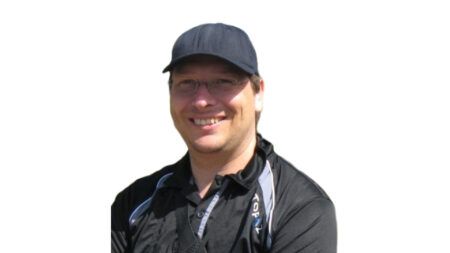Is it more difficult to be a test pilot now than it was in days gone by? Aerospace engineers Garnet Ridgway and Sophie Robinson, who met at the Flight Science and Technology group at the University of Liverpool, have a difference of opinion.
Garnet Ridgway: One of the primary design aims for modern military aircraft is to achieve ‘capability density’ – the ability to ‘do more with less’. To this end, many such aircraft feature glass cockpits that, at first glance, appear to represent a simpler solution than the regimented rows of instruments of the traditional cockpit. However, what lies beneath the surface of the touchscreen user interface is a virtual equivalent that, if laid out conventionally, would be many times the size. Additionally, this interface not only provides information, but demands user input on an unprecedented scale. In terms of pilot workload, the operation of such systems represents a challenge comparable with any historical examples.
With increased levels of complexity inevitably comes increased expense per flying hour. Also, implicit in the concept of increased capability density is the fact that fewer airframes will be produced. The combined effect of these two factors is a vastly reduced number of flying hours available for the testing of a new aircraft compared with an equivalent project in the past. This means that it’s not only the capabilities of the aircraft that are condensed, but also the content of the flight test program. With this in mind, test pilots will know that any decisions they make that delay the program will have significant financial implications, against which is the ever-present need to avoid endangering flight safety. The resulting compromise is one that can have immense implications if misjudged in either direction – a hugely significant responsibility that rests squarely on the shoulders of the test pilot.
Away from the cockpit, the modern test pilot is typically part of a large test team, which can consist of hundreds of personnel from a variety of disciplines. As the ‘end user’, the pilot is constantly in demand for input to non-flying activities such as document reviews, customer meetings and safety consultations. These roles require skills that are totally distinct from those taught at test pilot school, but which are vital to the success of the project; and such diversity in the role is an entirely modern phenomenon.
Modern test pilots are presented with novel aircraft that would be inconceivable to their predecessors. The physical danger may be reduced, but the mental capacity demanded of test pilots has never been higher.
Garnet Ridgway has a PhD from the University of Liverpool. He has designed cockpit instruments for Airbus and currently works for a leading UK-based aircraft test and evaluation organization.
Sophie Robinson: The Empire Test Pilots’ School (ETPS) celebrates its 70th anniversary this year. Based at MoD Boscombe Down in Wiltshire, UK, ETPS was established as a response to the increasing numbers of fatalities during flight tests. It was the first test pilot school, and as such this anniversary also represents 70 years of professional flight testing. Test pilots have a reputation for being at the pinnacle of their profession, but is the role as challenging today as it once was?
ETPS’s motto is “Learn to test; test to learn” – and for the first test pilots, this applied to their person as much as it did to their aircraft – they were subjected to unknown risks. In 1953, Chuck Yeager set a world speed record with the Bell X-1A. After achieving Mach 2.44, the aircraft spun out of control and plummeted 51,000ft in just 51 seconds, exposing Yeager to forces in excess of 8g. Yeager also broke the canopy with his helmet, but managed to successfully land the aircraft. Engineers had warned Yeager to stay below Mach 2.3 as the aircraft might ‘go divergent’ at higher speeds, but they were unprepared for such an extreme response – this was test flying at its most experimental, and such leaps into the unknown would not be attempted today.
Pilots were also subjected to known risks; exposure to extreme cold and low pressure at altitude and large accelerations were all part of the job. One man exposed to all these risks was Joseph Kittinger, who held the record for the highest parachute jump from 1960 until 2012. During his quest to set this record, Kittinger was lassoed by his parachute, spinning him out of control at 120 revolutions per minute. He lost consciousness, his life being saved only by his parachute opening automatically at 10,000ft. During other jumps, Kittinger lost the use of his right hand due to a pressure seal in his glove failing and his skin was exposed to temperatures as low as -70°C. Today, experiments with known risk levels as high as these wouldn’t get off the ground.
Being a test pilot was more challenging in the past simply because of the absurdly high risk levels encountered on a regular basis. In the words of Yeager, “You don’t concentrate on risks. You concentrate on results. No risk is too great to prevent the necessary job from getting done.”
Sophie Robinson is currently finishing her PhD as part of the Flight Science and Technology research group within the Centre for Engineering Dynamics at the University of Liverpool. In the course of her research, Sophie regularly works with test pilots.




